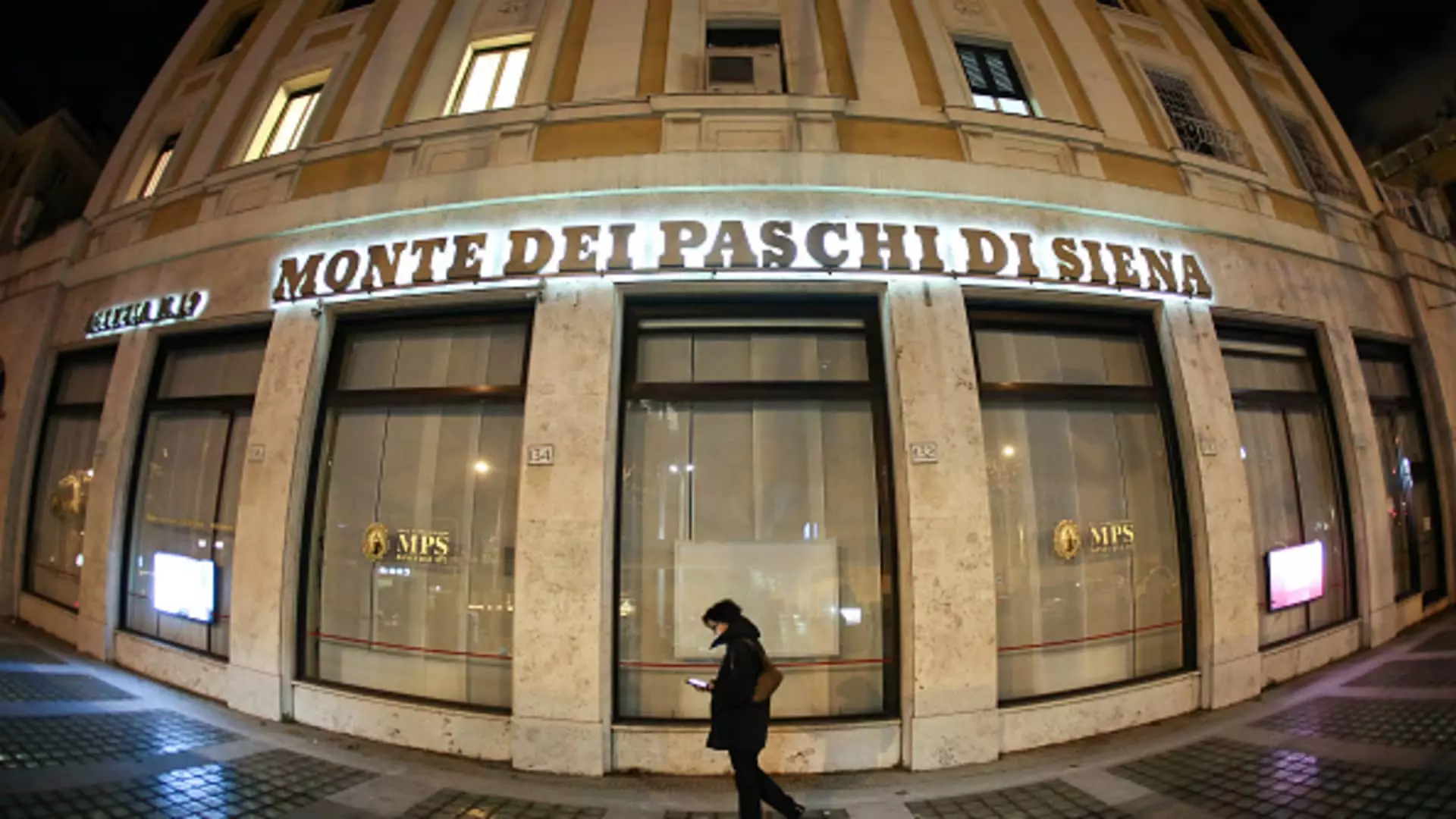In a significant development within the Italian banking landscape, Monte dei Paschi di Siena (MPS), the world’s oldest bank, announced a groundbreaking all-share takeover bid worth €13.3 billion ($13.95 billion) for its larger domestic rival, Mediobanca. This move underscores not only ambition but also a potential turning point for MPS, which has historically wrestled with challenges that precipitated a state bailout in 2017. However, current market dynamics illustrate that the landscape is shifting, as evidenced by MPS’s almost 8% drop in share price, juxtaposed against a 6.28% rise in Mediobanca’s shares.
Monte dei Paschi’s offer is structured in a way that proposes investors receive 23 shares of MPS for every 10 shares of Mediobanca, thereby valuing the latter at approximately €15.992 each. Interestingly, this valuation represents a 5% premium compared to the prices observed at the close of trading on January 23, a critical point in this negotiation. The potential for the agreement to proceed hinges on shareholder approval during a forthcoming meeting slated for April 17.
Critical to understanding this acquisition bid is the context in which Monte dei Paschi operates financially. As of January 23, its equity was valued at €8.7 billion, while Mediobanca’s market capitalization sat significantly higher at €12.3 billion. This disparity raises questions about the viability and strategic soundness of the takeover. Analysts from KBW have voiced concerns, suggesting that the proposed merger has “limited” synergy potential, hinting at possible complications that could arise if the bid concludes favorably.
MPS’s management, led by CEO Luigi Lovaglio, is optimistic about the expected pre-tax benefits of €700 million annually arising from this merger. This forecasting includes accessing tax credits from prior losses, with additional projected gains anticipated in the following years. Significantly, the delisting of Mediobanca is on MPS’s agenda, illustrating a desire to consolidate control and reshape the banking landscape.
The proposed acquisition is reflective of broader trends towards consolidation within the Italian financial sector, a dynamic acknowledged by the Italian banking union Fabi. Following the announcement, they expressed that this move could bolster the resilience of the Italian banking system amidst rising economic pressures. With high-interest rates benefiting lenders, Monte dei Paschi recently distributed its first dividend in over a decade, pointing to a resurgence in financial health.
Moreover, this impending merger must be viewed against the backdrop of rival bids within the sector; for instance, UniCredit’s aspiration to acquire Banco BPM is worth mentioning, alongside Banco BPM’s interest in bringing Anima Holding under its umbrella. The competitive environment raises the stakes for all parties involved, suggesting that MPS’s move may just be a strategic positioning within a broader wave of merger and acquisition activity.
Lovaglio’s assertion regarding the timing and compatibility of merging entities presents a cautiously optimistic view for stakeholders. He characterizes Mediobanca as a “best fit,” implying that the combination of the two banks could yield a strong, diversified business model that withstands market fluctuations. However, the success of this merger hinges heavily on effective integration strategies and the ability to extract promised synergies—a complex undertaking in the banking sector, where cultural and operational differences can impact progress significantly.
Monte dei Paschi’s bold initiative to acquire Mediobanca marks a pivotal moment encapsulating both risk and opportunity. With the challenges of historical losses and the realities of the current market, MPS is charting an ambitious path forward. Whether the merger will augur positive change for the two institutions and the Italian banking sector remains to be seen, and stakeholders will undoubtedly be closely watching the developments leading up to the critical shareholder vote. The dynamics of this scenario will unfold over the coming months, determining not just the fate of MPS and Mediobanca, but also the future landscape of Italian banking itself.

